Sullivan’s Travels (1941)
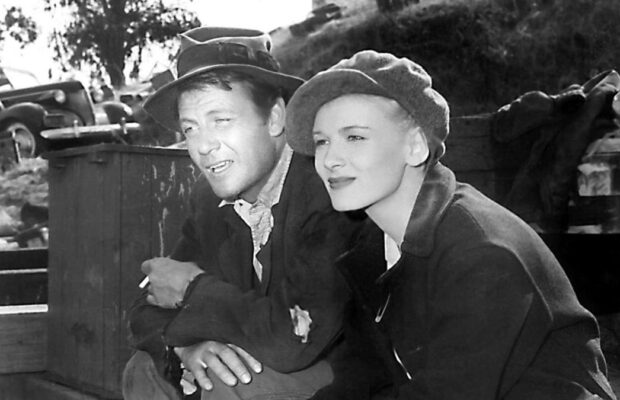
Toronto Film Society presented Sullivan’s Travels (1941) on Monday, August 8, 1983 in a double bill with Otto E Mezzo [8½] as part of the Season 36 Summer Series, Programme 7.
Production Company: Paramount. Producer: Paul Jones. Director: Preston Sturges. Screenplay: Preston Sturges. Photography: John Seitz and Farciot Edouart. Music: Leo Shuken. Editor: Stuart Gilmore.
Cast: Joel McCrea (John L. Sullivan), Veronica Lake (the girl), William Demarest (Mr. Jones), Robert Warwick (Mr. LeBrand), Porter Hall (Mr. Hadrian), Eric Blore (Sullivan’s valet), Robert Greig (Burrows the butler), Franklin Pangborn (Mr. Casalsis), Alan Bridge (Mr. Carson), Torben Meyer (doctor), Jimmy Conlin (water carrier), Harry Rosenthal (tramp in boxcar), Victor Potel (Cameraman), Frank Moran (the chauffeur), Byron Foulger (Mr. Valdelle), Margaret Hayes (Secretary), Esther Howard (Miz Zeffie), Almira Sessions (Ursula).
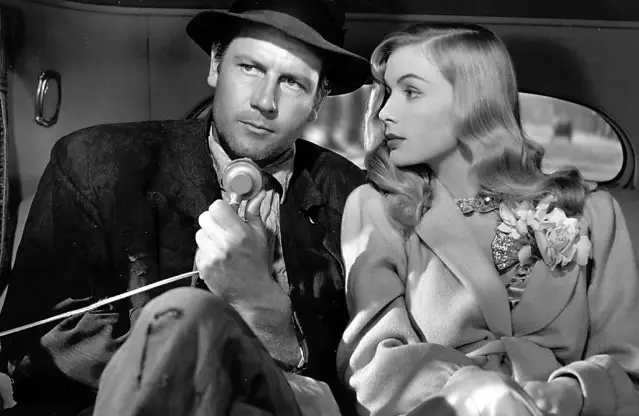
Preston Sturges once told the critic, Andrew Sarris, that his favourite film was Josef von Sternberg’s The Last Command (Programme 5). Sturges’ own film about film making, Sullivan’s Travels, inspired Martin Knelman to write such a glowing review when he finally caught up with it in the late 1960s that many Globe and Mail readers had to be turned away from a revival screening at the Little Music Library Theatre. In 1948, Andrè Bazin called Sullivan’s Travels one of the most sensational productions of the last ten years. Few who have seen it have ever been disappointed.
As one might guess, Sullivan’s Travels is indebted to Gulliver’s picaresque adventures and to Swiftian satire. Sturges was one of the most literate and sophisticated American film makers of his generation; consequently, his script sparkles both with New Yorker wit and with digestible social commentary. The film’s dual nature is reflected in contrasting tones ranging from a poppy opening to a truly bleak portion in the second half. In some ways, Sturges’ view of the world is summed up in his dedication of the film “to the world’s clowns and mountebanks” who often evoke laughter while inwardly weeping for life’s miseries.
The film’s protagonist, John L. Sullivan, is a film director who decides in the first reel to abandon yet another sure-fire light-weight script like “Ants in Your Pants of 1941” to make a “meaningful” film about the misery shared by the poor in America at that time. But to make a film like “Oh Brother, Where Art Thou?” Sullivan realizes that he must experience the deprivation of his miserable characters, and close to penniless, sets out on his own explorations in their midst. The rest of the film is, quite naturally, structured episodically, until a satisfying resolution that viewers may not find unexpected.
Richard Koszarski has suggested that Sullivan may be modelled after Paramount contract director, Frank Tuttle (This Gun for Hire, Miss Susie Slagle’s), but it is more likely that Sturges’ own blend of humour and complex soul-searching is the source. His tongue-in-cheek attitude is reflected in the Hollywood sequences, where a dyspeptic executive directs an underling to examine a script: “You read it too. Why should I have to suffer alone?” Sturge satirizes Hollywood servants and swimming-pools, the casting couch, noisy belching movie audiences, Hollywood taste in funerals, and daily life on the Paramount lot. His lively approach to this material (switch pans, fast tracking shots, high key lighting, vigorous music) contrasts with his later treatment of the world of derelicts (slow pans, low angle shots of shuffling feet, shadowy lighting, a dirge-like score). In fact, Sullivan’s Travels, which begins like an Ernst Lubitsch comedy (Paramount’s treasured Lubitsch, is referred to occasionally in the scenario) converts for a time to a blend of Mervyn LeRoy’s I Am a Fugitive From a Chain Gang and John Ford’s The Grapes of Wrath, in order to allow Sturges to give vent to some strongly felt social criticism. It is interesting that at such times it is directors like LeRoy and Ford that he resembles rather than the more naïve Frank Capra, whom a director of comedy might well have wanted to emulate when dealing with social consciousness in 1941. (Sullivan does, however, invite some fruitful analogies with Capra’s Longfellow Deeds).
The usual Sturges supporting players are very much in evidence, and in his stars, the casting office did him proud. Joel McCrea, fresh from Hitchcock’s Foreign Correspondent, was probably the Jeff Bridges of his generation–understated, underrated and underused. Tiny Veronica Lake, as a starlet, projects the same strength and poignancy that would enhance René Clair’s I Married a Witch the following year. All serve their script-writer/director well in this film which is, after all, an apologia for the comic artist. The film’s very success as entertainment is the surest attestation of the truth it contains: “There is a lot be to be said for making people laugh.—It isn’t much, but it’s better than nothing in this cockeyed caravan.”

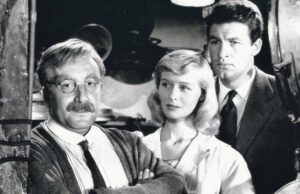
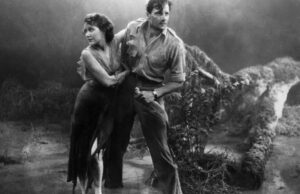
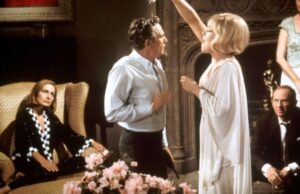






Leave a Reply